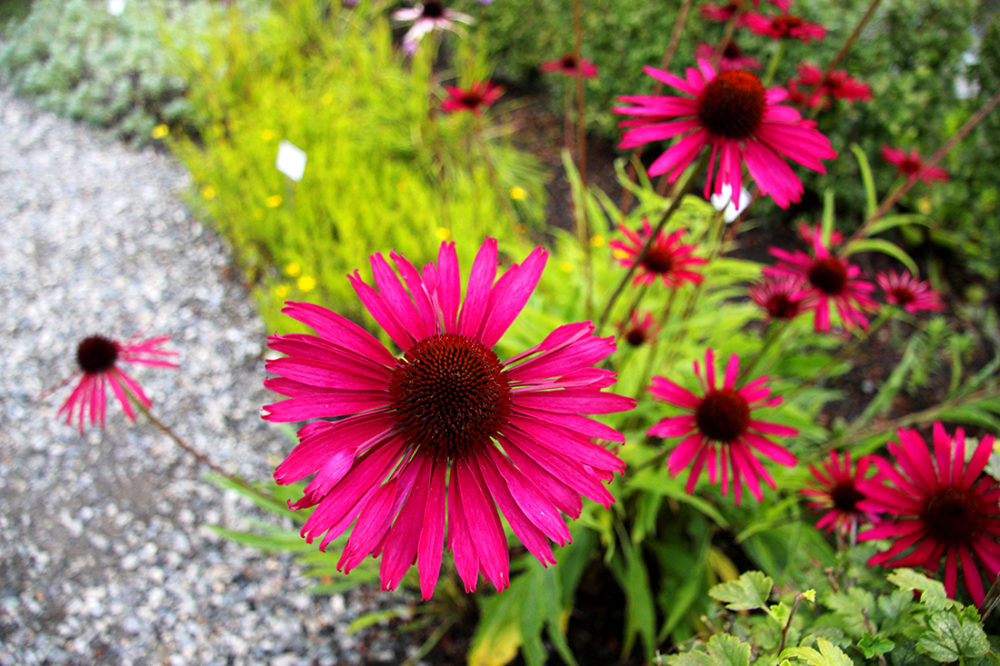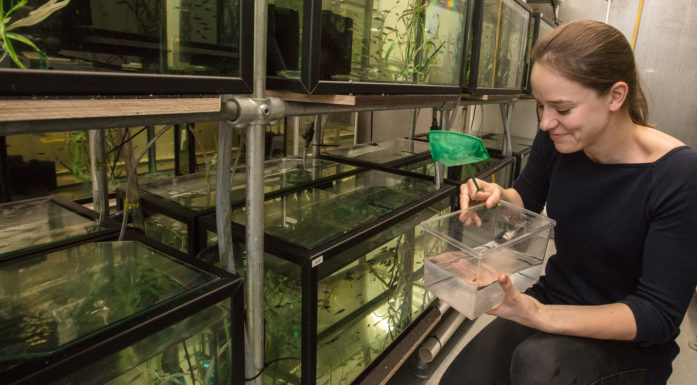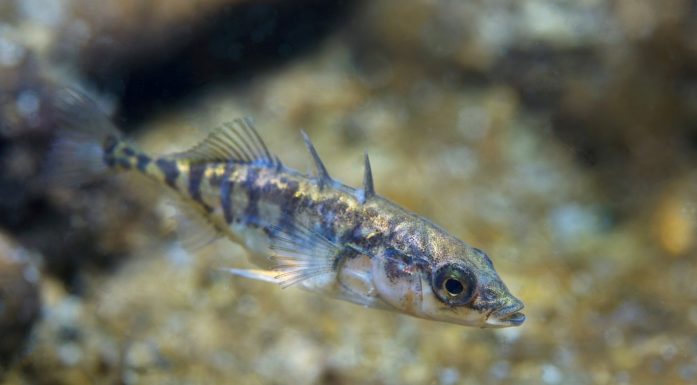Re-ordering plant taxonomy
Advances in our understanding of the developmental history of plants is turning botanical gardens worldwide on end.
In the mid-1800s, Charles Darwin’s theory of evolution led to a new understanding of life on Earth. With Darwin’s theories as a starting point, botanists began working to classify groups of plants that they believed shared a common origin.
Scientists have been creating different hypotheses for the history of plant development in the hundred-plus years since. They studied what they could observe with the naked eye or through a microscope: the structure of stalks, leaves and flowers, cell structure and the number of chromosomes.
- You might also like: The potato disease that changed the world
Same method of pollination
The researchers also knew that flowering plants — the largest plant group — had coevolved with insects through pollination adaptations. Plants with many similarities in structure and methods of pollination were considered to be closely related.
Ringve Reorganization
Over the next three years, the entire plant system in Ringve Botanical Garden in Trondheim will be reorganized so that it reflects the updated understanding of how flowering plants have evolved. A quarter of the plants has been dug up and transplanted in the autumn of 2016.
- You might also like: Searching for answers to a century-old biological question
DNA altered understanding
Then came the molecular revolution of the 1980s. Through studies of plants’ DNA, botanists could now see exactly how genetically alike or different plants were. They could identify both the direct relationship between plants and the broad timeline of plant evolution, and gain a more accurate understanding of how developments in the plant kingdom had transpired. Among other findings, the new methods revealed that plants previously believed to be closely related, were not.
As the new theory has gradually established itself, botanical gardens in a number of countries have begun to replant their systematic displays to more accurately place flowers, shrubs and trees according to the new knowledge about plants’ relatedness.
- You might also like: Why some cuckoos have blue eggs
A maze of plant species
Ringve Botanical Garden in Trondheim was established as a university garden in 1973. The Systematic Garden within it was designed according to the 1970s knowledge of plant relatedness. Several botanical gardens in other cities and countries have similar systems.
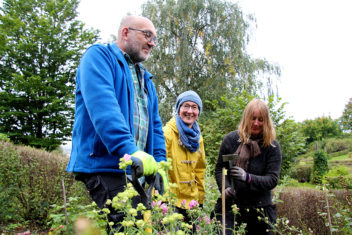
Over the next three years large parts of the Systematic Garden in Ringve Botanical Garden at NTNU University Museum are being rearranged. Gardeners Steinar Gagnås and Reidun Mork (left and right), and the Garden’s scientific head Vibekke Vange (centre) have already started to dig in. Photo: Grete Wolden / NTNU Communication Division.
The Systematic Garden in Trondheim looks like a maze, where hedges separate 50 different “plant order rooms.” Each garden room contains plants from up to three plant families that botanists thought were closely related. In the Ranunculaceae display, for example, one finds buttercup, globeflower, clematis and columbine – plus various berberis shrubs, since the room also houses Berberidaceae.
Reflected understanding at the time
When you enter the gardens, you pass cryptogams (spore plants) and conifers before arriving at the garden room with the order considered to be the earliest flowering plants: magnolias. Continuing through the maze, you eventually approach the “present day” in the evolution of plants. Rooms that are far apart contain plants that were seen as distantly related.
From the magnolia room you go through the orders of Saxifragales, Gentianales and on to Asterales – with their sunflowers, asters, daisies and echinacea. The last room is the only one that borders an edge. This reflects scientists’ earlier understanding that some plant groups were derived from other, living plant groups.
- You might also like: The weeds that settlers spread
Major garden reorganization
Over the next three years, the entire plant system in Ringve Botanical Garden will be reorganized so that it reflects the updated knowledge of how flowering plants have evolved. This fall, a quarter of the plants are being dug up and transplanted.
“A systematic garden like this is never static, but now the major changes in what we know about the evolution of flowering plants are so well confirmed that it’s time to follow them. We want to have a facility that general visitors, university students and school classes find relevant and useful,” says Vibekke Vange, associate professor of botany and general manager at Ringve Botanical Garden.
Wind pollination knowledge updated
When botanists started to use DNA analysis, it turned out that their previous theories, which were primarily based on similarities in plant construction, were fairly close. Except in one area in particular, where they had been fundamentally wrong.
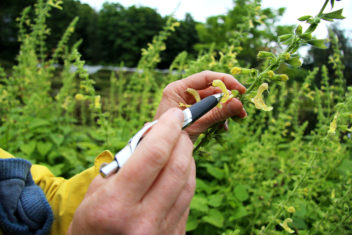
This sage species is a representative of the mint, or Lamiaceae, family – a highly specialized plant family. Insects need a long narrow tongue to catch nectar at the base of the flower. The insect pushes back the staminal lever, shown here with a pen, and then the pollen is deposited on one particular little spot on the insect’s body. Photo: Grete Wolden / Communication Division.
Botanists had thought that wind pollination — when pollen is carried on the wind instead of by pollinators — was so unusual that it could only have happened a few times in the evolution of plants. Wind-pollinating species, like birch, alder, willow and nettle, were widely believed to be closely related to each other.
Using DNA analysis, the researchers discovered that wind pollination had evolved several times and in several different “branches” of flowering plants.
“Wind-pollinated trees, shrubs and perennials have been located close to each other in Ringve’s Systematic Garden. Now these plants are being distributed to garden rooms that are far apart,” Vange says.
“That means excavator work. When we start moving plant groups, it creates a domino effect, so a lot of the garden will be affected until the rearranging is completed. But this gives us the opportunity to do a general upgrade of the facility,” she adds.
Plants with common ancestry
When the gardens were planned, the desire was to create a three-dimensional “family tree” in the ground rather than in flat beds. The paths through the plantings represent he trunk and branches of the family tree, and the garden rooms with different orders of plants branch out in all directions like a tree’s leaves.
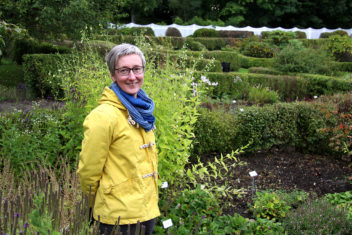
Vibekke Vange is associate professor of botany and general manager at Ringve Botanical Garden, part of NTNU’s natural history museum. She has made plans for a comprehensive reorganization of the plants in the Systematic Garden, which will run over the next three years. Photo: Grete Wolden / NTNU Communication Division.
Incorporating a three-dimensional family tree into the ambitious reorganization makes the Systematic Garden at Ringve special and valuable, says Vange. And it also means that the changeover is demanding.
“We’ll keep the structure with hedges that separate garden rooms by order. Between these rooms a lot of plants will be on the move. Closely related families will still be grouped within the same rooms, and buttercups and barberry still belong together. However, we no longer believe that groups of living plants evolve from other groups of living plants. Adjacent rooms haven’t evolved from each other but share a common origin and are closely related,” she says.
